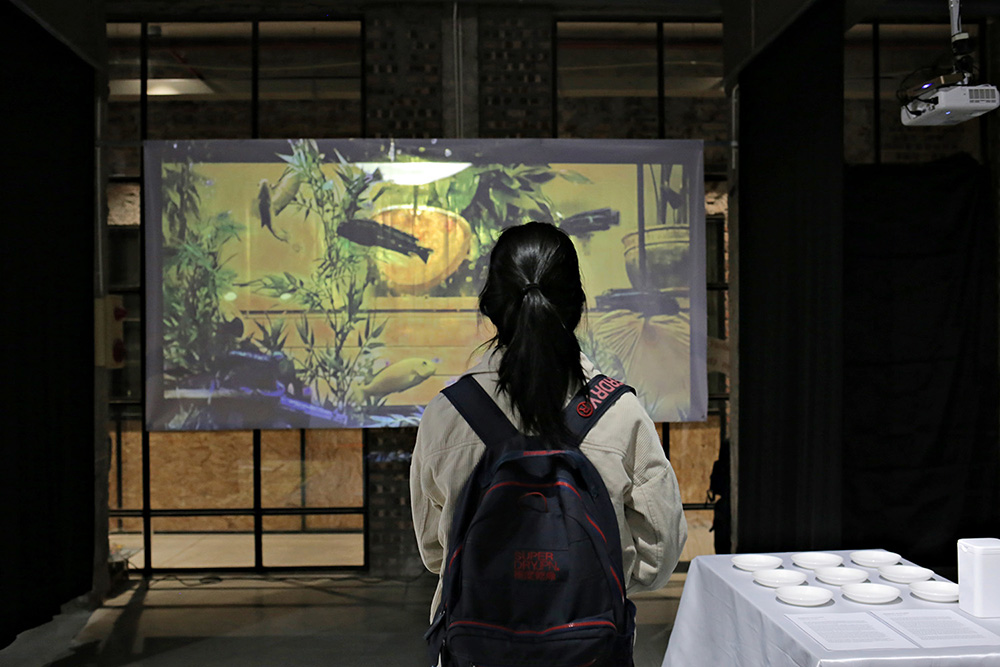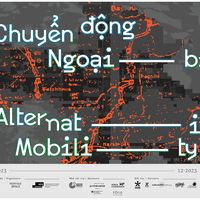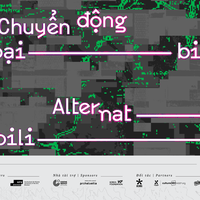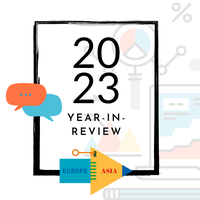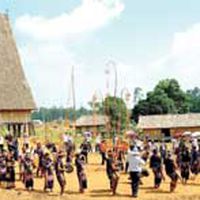Month of Art Practice 2023 | A conversation with Heritage Space & University of the Arts Bremen
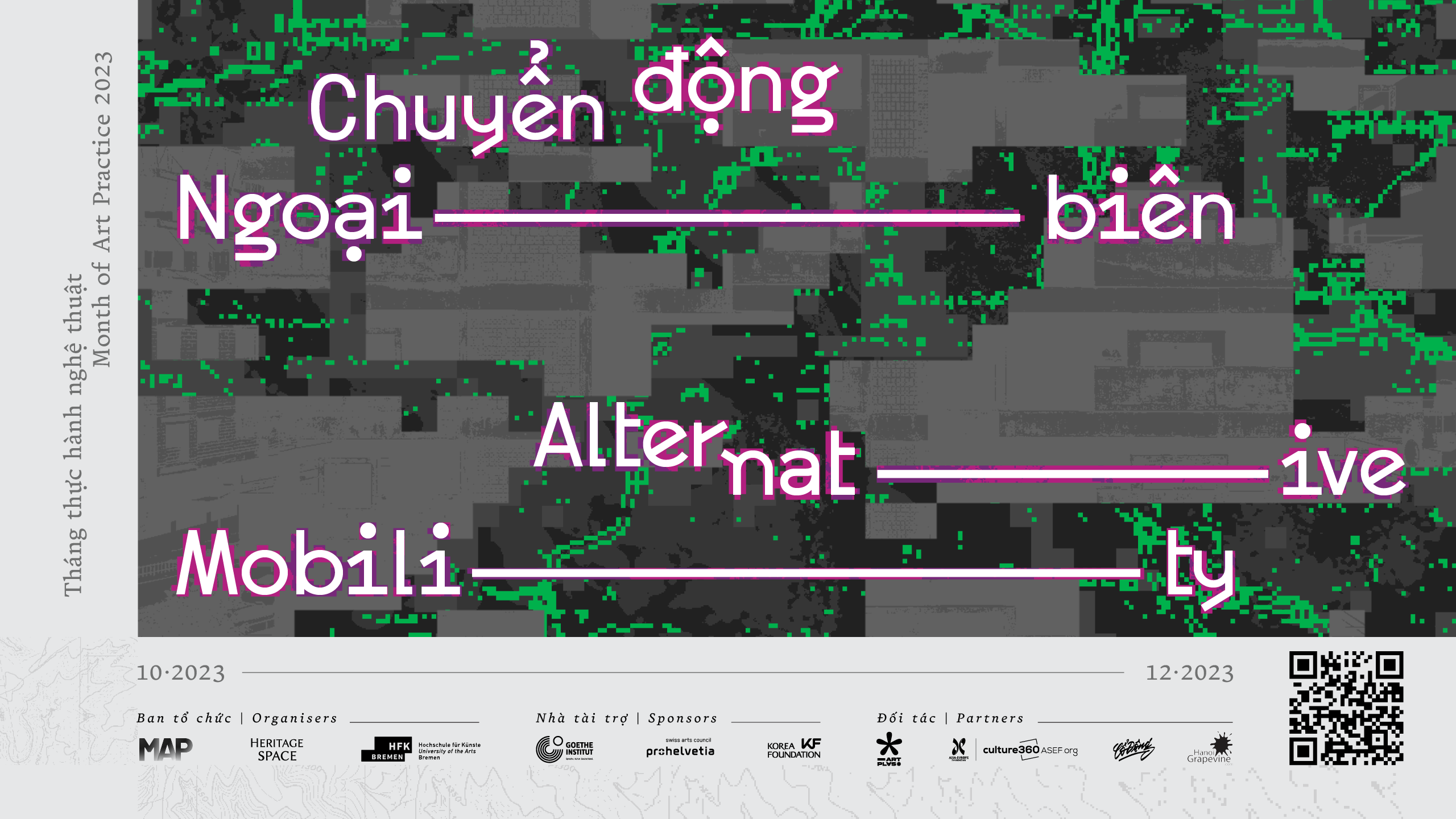
As part of culture360's Media Partnership with Heritage Space, we speak to Curator, Art Manager and Artistic Director of Heritage Space, Nguyen Anh Tuan and Professor Ingo Vetter from the Bremen University of the Arts, to find out more about Month of Art Practice 2023, the organising team and the contemporary art scene in Viet Nam.
1. How would you describe Heritage Space? Could you share with us how and why Heritage Space was established. Why do you think Heritage Space is important in Viet Nam’s visual arts scene?
Nguyen Anh Tuan: Heritage Space was established at the end of 2014 and officially started operating in 2015. That was a period when Viet Nam did not have many independent spaces and organisations for arts and culture. The major cultural and art infrastructure system are run by the state, such as: museums and galleries, art schools, academies for study and research, and both indoor and outdoor spaces for public art and cultural activities.
Since then, there have been several independent artist collectives and groups, spaces and small-scale organisations who have emerged and become rather active in both the North and South of Viet Nam. They are still very limited in many aspects nonetheless, and are a completely insignificant amount in comparison to the country's population of 90 million, Viet Nam's overall development and the diverse multi-dimensional exchanges with the world.
The existence of Heritage Space, therefore, has important meanings in the current context in Viet Nam and the international cultural and art scene:
- First, would be to provide opportunities for the new generation of artists who are young, talented, independent, but less recognised by the large established public and lacking in opportunities for self development
- The maintenance of diversity in creativity and cultural expressions in a country where there's limited variety of expression, multi-layered and complex censorship, and a lack of both infrastructure and intellectual resources
- A multi-dimensional exchange and connection platform for local art and culture (between artists and public) and internationally between artists to artists, artists to organisations, organisations to organisations, Southeast Asia, Asia and globally.
- Lastly, it would be to act as a Vietnamese outpost to keep up with global cultural trends and ideologies in cultural production and artistic practices
2. Month of Art Practice (MAP) is dedicated to the development of contemporary art in Viet Nam. Curators and artists from Europe and Asia, along with young emerging Vietnamese artists will join this workshop and programmes for a duration of 3 months, then present their works in a final exhibition. Could you tell us a bit more about how the concept of MAP was developed and what your vision is for this edition?
Nguyen Anh Tuan: As mentioned above, as of 2014-15 in Viet Nam, the main infrastructure of culture and art, from education, production and distribution is still managed by the state. That system was formed and enforced since the 1960s-70s and has changed little since, with the history of being heavily influenced by top-down models of order and control such as in the Soviet Union and China. Contemporary art, therefore, is still not taught in art schools in Vietnam, nor are there any large-scale public museum or national gallery. New generation artists in the country must find different ways using their personal abilities to create their own opportunities if they want to pursue contemporary art.
MAP is initiated in this context. It aimed to create a school where there are no teachers and no students, all artists participate equally as colleagues. They will exchange and learn together. They will work side by side in the same space, sharing the same topics and stay in the same living and working conditions. Young Vietnamese artists will receive specific knowledge about contemporary art in the world, and they will gain practical lessons about the responsibilities and attitudes of artists today. Artists from other countries receive new experiences in working and living in conditions that’re not their own, and with inevitable cultural conflicts.

1. Visitors at the Month of Art Practice (MAP) exhibition in 2020 © Heritage Space/MAP
Moreover, we also hope that MAP will provide opportunities for the public to approach and thoroughly access the movements of domestic and international arts. They will have the opportunity to observe art in the perspective of adaptation, engagement and contributions to the community. We hope to encourage and build the new platform for creations and collisions in social awareness and behavior to generate impulses for the development of art in particular, and the goals of sustainable social development.
MAP has been operating since 2015 until now, without interruption even through COVID, and has proven its enduring vitality, meaning and value to the cultural and artistic life in Vietnam and the Southeast Asia.
3. The theme for this edition’s MAP will be “The Alternative Mobility”, what does the chosen theme reveal about what Viet Nam’s arts and cultural scene is like nowadays? How would you describe the local creative community?
Nguyen Anh Tuan: "The Alternative Mobility" is a topic that I and Ingo Vetter, a fellow MAP artist, discussed and conceived together for the last two years. Ingo Vetter is a professor for sculpture at University for the Arts Bremen and responsible for the DLR (Deutsches Zentrum für Luft- und Raumfahrt /German Aerospace Center) - funded research project “Bremen goes Sustainable” and leads the subproject “Artistic perspectives on mobility”.
To explore the dimensions of the theme, we decided to use the model of MAP to implement working groups both in Hanoi and Bremen. Curators and artists of MAP will develop different ideas based on their own perception and perspective, experience and artistic language to develop experimental art programmes, artworks or performances during the project period.
2. Young audience visiting the Month of Art Practice (MAP) contemporary art exhibition in 2021 © Heritage Space/MAP
Mobility is an essential aspect of urban life in Hanoi. Mobility in daily traffic is extremely rich and varied, with all kinds of private and public vehicles, motorised and human-powered. It is closely associated with livelihoods: walking street vendors selling food and necessities, bicycles, motorbikes transporting both guests and goods, cars, trucks and self-made vehicles, means of mass transportation and services such as cars, taxis, buses, trams, trains and even water transport. Few cities have streets with such an abundance of vehicles and modes of transportation. When the traffic system is like the blood vessel of the urban body, the abundance of motion forms circulates at the most optimal level, creating the vitality of the whole city. Hanoi is a city moving in every moment, every breath, and shaped by its different forms of mobility.
Not only with life aspects, “movement” is also associated with artistic and cultural life in Viet Nam, especially Hanoi, where the sustainability of art organisations and artists is extremely precarious. It is not the movement itself, but the constant fluctuations and shifts of time, context, politics, resources, people that drive to mobility as strategies and artistic practices. The theme of this project, therefore, fits very well with the direction and structure of MAP, which has long-term implications in the search for survival strategies of art in the situation of limited resources and heavy prejudices from society.
4. How do you see the work of Heritage Space evolving in the future, and what new themes do you hope to explore through future editions of MAP?
Nguyen Anh Tuan: The work of Heritage Space is shaped based on the movement of culture, art, and society domestically and internationally. On one hand, we still maintain the existence of Heritage Space as a platform of archiving, nurturing and producing culture locally. On the other hand, we develop and expand our international network in culture and art, looking for opportunities to exchange, cooperate, and work with partners in new and other countries and geographical regions.
In the future, we will focus on the area of research and art archiving with an educational orientation, to create a deeper foundation in indigenous culture, history, creating more specific and profound values for the art community and the public.
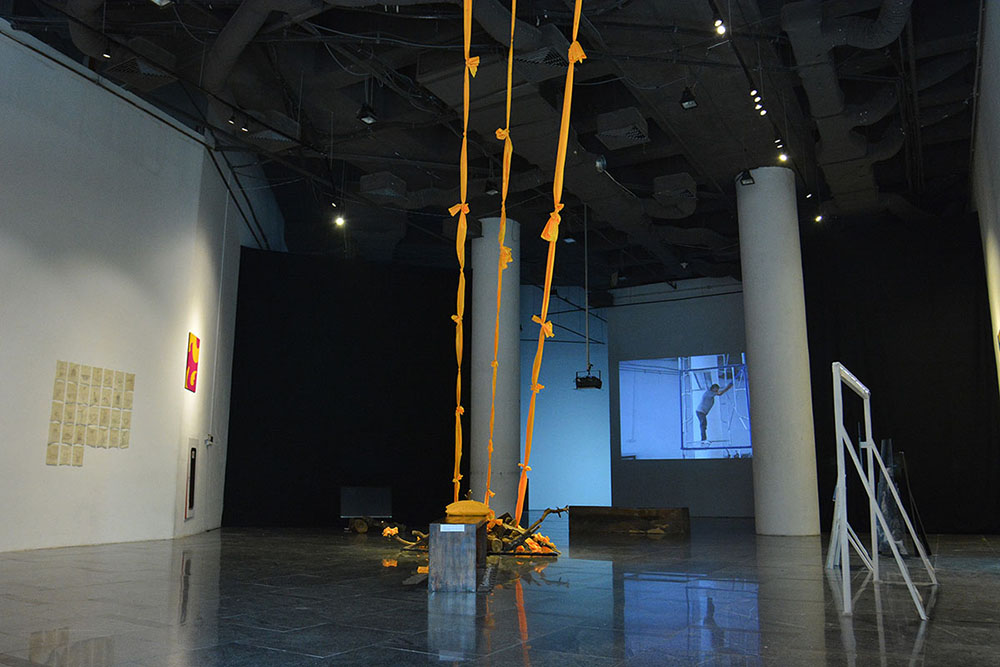
3. Installation view of the Month of Art Practice (MAP) exhibition in 2022 © Heritage Space/MAP
To do that, we are currently working on two main orientations-projects, of which MAP will remain a branch for artistic experimenting, locally nurturing and international connecting. The other branch is Viet Nam Contemporary Art Database (VCAD), a project to build an online archive of contemporary art timeline and data which is for education, research and forming the reference sources for the arts of Viet Nam in the global context.
5. Part of this edition’s MAP is a collaboration with the University of the Arts Bremen, one of the most successful arts institutions in Germany, specialising in Visual Arts. Please share more about the collaboration and how the university’s contributions will complement the diverse programme and theme of MAP 2023.
Professor Ingo Vetter: Both partners benefit from this cooperation. For the University of the Arts Bremen, it is important to have an international partner as a comparative and innovative strength in this research program and Heritage Space gains from the academic framework and its tools for quality development. Within the research project, we have a clear mission to experimentally explore artistic perspectives and develop new narratives on mobility.
This is a key question of the entire research project: How are we talking about new values of sustainability? All too often, scientific results remain abstract, and we as artists have great competence in mediating and communicating them.
MAP involves professional artists and brings them together with young emerging talents and thus the program is comparable to a post-graduate education in Fine Arts. Our cooperation is planned for three years and with this experimental approach, we are expecting important influences in the further development of artistic education both in Viet Nam and Germany. As a model for a platform based artist-to-artist education, international oriented and with sustainability as an integrated value.
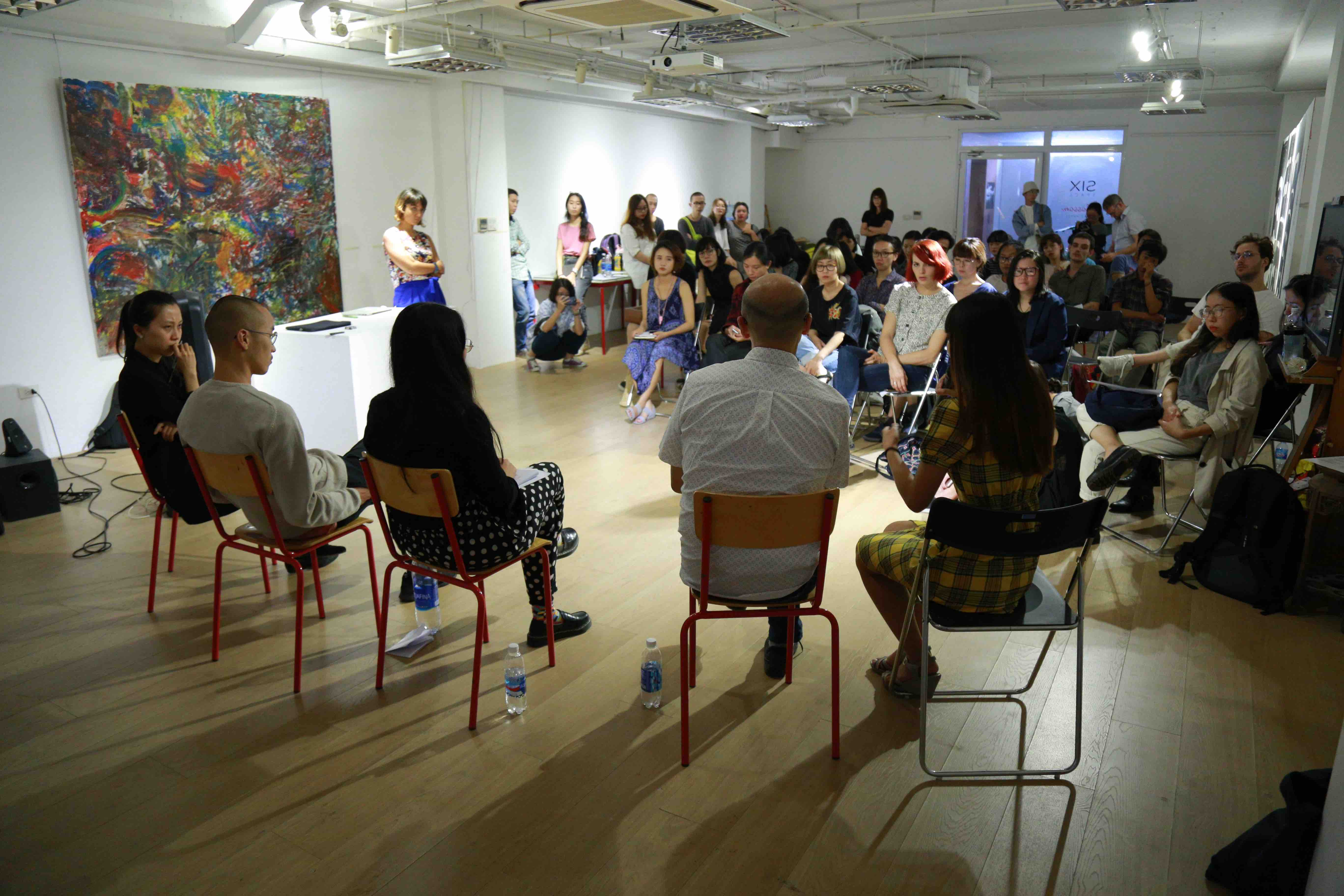
4. Artist talks at the Month of Art Practice (MAP) exhibition © Heritage Space/MAP
6. In the context of Asia-Europe cultural exchanges, what role do you see for artists and cultural professionals like yourself and other arts organisations, in enhancing the connections between the two regions?
Nguyen Anh Tuan: About Heritage Space, as far as we can see, the exchange of artists and organisations between two regions is extremely essential. This cooperation not only creates opportunities for artists from different countries to come together, opening up the exchange, learning and mutual understanding, but it also maintains the flow of intellectual culture from Europe to Asia and vice versa. Artistic culture is one of the main channels for creating spiritual values of humanity, and those values must be circulated from place to place to collide with many differences in geographical, climatic, and human contexts in order to multiply, to be rich, to be abundant in order to create equitable development among countries and people living on.
Professor Ingo Vetter: At University of the Arts Bremen, we have about 50% international students and the majority come from Southeast Asia. Since we do not want this to remain a one-way street, we have established contacts and exchange programs with art and design universities in the region. Participating as equal partners in a German state-funded research program is a new level of cooperation. With Heritage Space as a reliable partner and MAP as a format, that has shown in the past that it can produce high quality results, we are very confident to achieve the goals described in the research project.
Cover Image: Month of Art Practice © Heritage Space/MAP
Don't miss out on the ongoing Month of Art Practice from now till December 2023! Check out the programmes, talks and lectures here.
Learn more about Heritage Space here.
About the Interviewees
Nguyen Anh Tuan is an independent art curator and manager based in Hanoi, Viet Nam. He graduated from the Hanoi Fine Arts University (now is Vietnam Fine Art University), in major of Theory & History of Arts. Tuan has worked as art researcher at the Institute of Art from 2002 - 2015, and as program manager of Muong AIR, the artist-in-residency program of Muong Studio from 2012 - 2016, and has taken on the responsibility as country director appointed by the Indochina Arts Partnership (2016 - 2019). Since March 2016, he was appointed to be Artistic director of Heritage Space - an independent art organisation in Hanoi, Viet Nam. Considering art as an approach and tool for social development, Tuan offers diverse initiatives and ways to nurture the arts, interacting directly with the special context in Viet Nam and diverse communities.
Ingo Vetter is a visual artist working with sculpture, photography and installations. He exhibits internationally and often collaborates with other artists, resulting in long term engagements like the Detroit Tree of Heaven Woodshop (since 2005). An interest in city development and concepts of public space lead to research projects like Shrinking Cities (2002-2008) and consultancies like his commission for a constantly moving public park in Kiruna, a mining city in the very north of Sweden (2011-17) or the public look-out Horizontalturm Mistelbach in Austria. Since 2011, he teaches as a professor for sculpture at the University of the Arts Bremen, Germany with a specific focus on artistic materials and production in globalization.
Since 2012, culture360.ASEF.org has supported the outreach and visibility of over 65 arts events in Asia and Europe. We strive to continue supporting on-site and virtual arts events across the 2 regions through a variety of communication activities. To know more, take a look at our Media Partnerships page and follow us on Facebook and Instagram.
Similar content
from - to
25 Nov 2023 - 17 Dec 2023
from - to
01 Oct 2023 - 31 Dec 2023
01 Feb 2024
posted on
08 Oct 2010
02 Oct 2015

